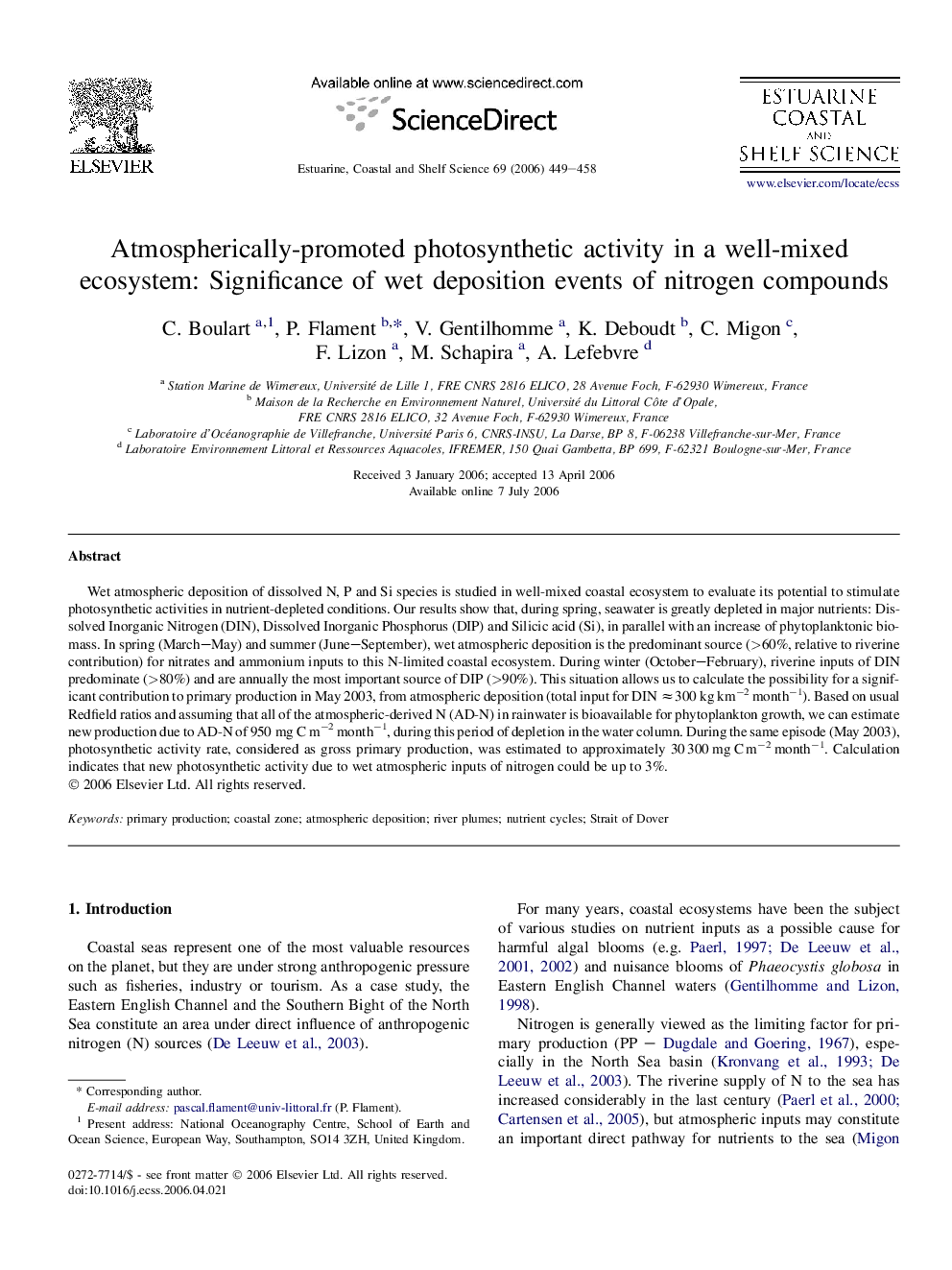| Article ID | Journal | Published Year | Pages | File Type |
|---|---|---|---|---|
| 4542233 | Estuarine, Coastal and Shelf Science | 2006 | 10 Pages |
Wet atmospheric deposition of dissolved N, P and Si species is studied in well-mixed coastal ecosystem to evaluate its potential to stimulate photosynthetic activities in nutrient-depleted conditions. Our results show that, during spring, seawater is greatly depleted in major nutrients: Dissolved Inorganic Nitrogen (DIN), Dissolved Inorganic Phosphorus (DIP) and Silicic acid (Si), in parallel with an increase of phytoplanktonic biomass. In spring (March–May) and summer (June–September), wet atmospheric deposition is the predominant source (>60%, relative to riverine contribution) for nitrates and ammonium inputs to this N-limited coastal ecosystem. During winter (October–February), riverine inputs of DIN predominate (>80%) and are annually the most important source of DIP (>90%). This situation allows us to calculate the possibility for a significant contribution to primary production in May 2003, from atmospheric deposition (total input for DIN ≈300 kg km−2 month−1). Based on usual Redfield ratios and assuming that all of the atmospheric-derived N (AD-N) in rainwater is bioavailable for phytoplankton growth, we can estimate new production due to AD-N of 950 mg C m−2 month−1, during this period of depletion in the water column. During the same episode (May 2003), photosynthetic activity rate, considered as gross primary production, was estimated to approximately 30 300 mg C m−2 month−1. Calculation indicates that new photosynthetic activity due to wet atmospheric inputs of nitrogen could be up to 3%.
